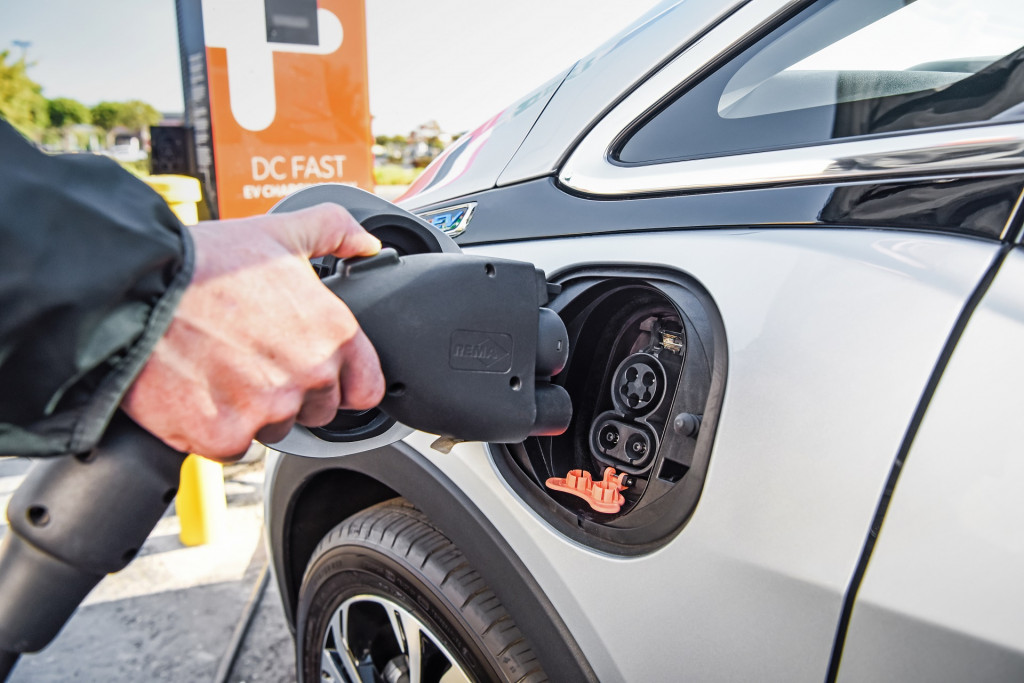OTTAWA – Canadian auto industry officials say aftermarket supply chains, including parts for repairs, must be guaranteed to boost consumer confidence in buying electric vehicles in this vast unevenly populated country.
With rural drivers possibly scores of miles from a repair shop, motorists fearing delays for EV parts to arrive may be reluctant to switch from combustion-engine vehicles, the officials say. Public transport in such regions is often sparse or nonexistent.
Canadian Automobile Dealers Assn. (CADA) chief economist Oumar Dicko says governments need to be sensitive to such market fragility as they encourage EV sales. He warns this could blunt the impact of widespread bans of combustion vehicles, noting, “Incentives drive demand, not mandates.”
Of concern for some aftermarket businesses in rural areas is the prospect of lost sales of gasoline and diesel and less regular maintenance, such as oil changes. EVs don’t need oil changes and have fewer moving parts, so garages potentially could be forced out of business.
“That is something governments need to start foreseeing,” Dicko says. One option would be for repair shops to offer supercharging services to replace fuel income, but “I don’t see how you can make it up,” he says.
Québec and British Columbia, who are planning to block combustion-engine sales within their provinces from 2035 and 2040, respectively, should plan ahead and take the aftermarket into account when considering where to finance and locate charging infrastructure, he says.
While EVs may need fewer repairs than combustion vehicles, they will still need seasonal tire changes, brakes replacements and suspension maintenance, as well as batteries replaced, so repair shops providing these services need to be sufficiently close. Such work “is a significant part of vehicle dealerships,” Dicko notes.
Manufacturers are stockpiling special EV parts as they roll out new models, creating inventory for repair shops, he adds.
Brian Kingston, president and CEO of the Canadian Vehicle Manufacturers’ Assn. (CVMA), says the Canadian federal and provincial governments also need to invest in consumer education about EVs, to build motorists’ confidence in using repair shops for electric autos: “They have been driving gas-powered vehicles for a long time. People are used to it. They have a basic understanding in how internal-combustion engines work. This is a big leap. People adapt, but it takes time.”
Another concern is the emerging hodgepodge of contrasting provincial regulations on promoting EVs through subsidies and bans on combustion engines (as per the policies in Québec and British Columbia), which may impede the development of cross-country EV aftermarket services.
Such differences are supposed to be forestalled by the Canadian Free Trade Agreement designed to ease Canada’s major interprovincial trading barriers. But Kingston says the federal government must be more proactive in preventing EV rule differences from impeding the creation of a comprehensive nationwide aftermarket network.
EV sales data, however, suggests that even today, with repair shops focused on combustion vehicles and charging points still being rolled out, customers outside big cities will buy electric.

Figures released by the Société de l'assurance automobile du Québec and Association des Véhicules Électriques du Québec indicate such rural and suburban demand in the predominantly French-speaking province of Québec.
The largest proportion of EVs among all vehicle registrations by region in September was in Lanaudière, a suburban and rural area north of Montreal, at 1.83% of vehicles; then Montérégie, a small region south of Montréal (1.78%), and the Eastern Townships, a southern rural region (1.57%).
All had EV ownership levels by proportion of population higher than the major urban centers of Montréal, Québec City and Laval, although more remote regions had lower EV ownership levels.
Daniel Breton, president and CEO of pro-EV group Electric Mobility Canada, says this is grounds for optimism, noting suburban and rural Canadians generally have higher vehicle ownership per head and larger properties for installing personal charging points.
As for repair shops going out of business without gas sales, he says owners would replace the income by offering alternative services, such as food and drink for drivers waiting 25 minutes for a recharge: “When people want something, they find a way. When they don’t, they find excuses,” Breton says.





